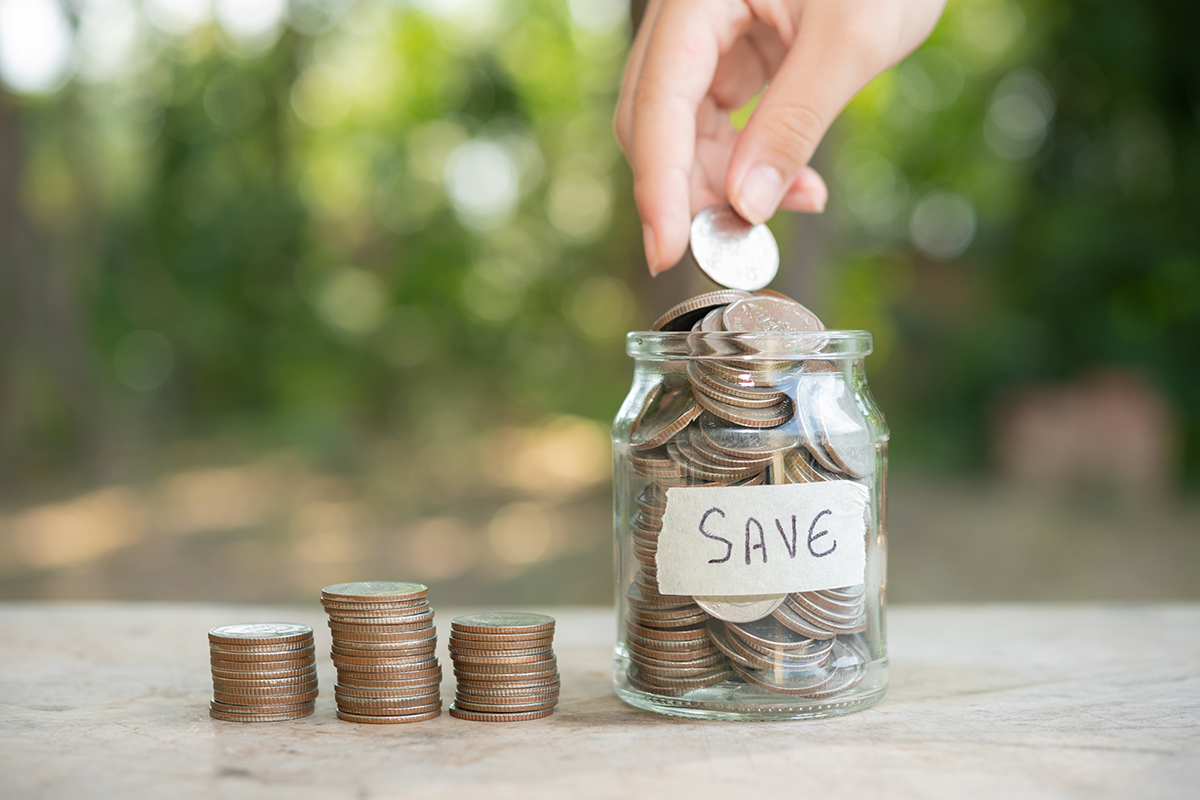7 Simple ways to save money on a daily basis

Developing healthy money habits is a gradual process, akin to adopting any new lifestyle change. It’s beneficial to begin with small steps that you can incorporate into your daily routine. According to a 2019 report compiled by GOBankingRates, based on data from the Bureau of Labor Statistics, the average daily spending for Americans amounts to nearly $165 across various categories, including essentials like rent, groceries, dining out, clothing, and entertainment.
The report revealed that millennials, in particular, had the highest overall spending, exceeding $200 per day, while Gen Z had the lowest daily average of nearly $100. Although some categories entail essential expenses, there were areas, like takeout spending, where opportunities to cut back on expenditures were evident.
While certain expenses like food, gas, and rent are essential and cannot be avoided, there are methods to reduce overall spending and allocate more funds toward retirement, investments, a house, or an emergency fund. Incorporating specific activities into your daily routine can aid in saving more money for your long-term financial objectives.

01. Consider brewing your own coffee in the morning
If you have a regular barista who knows your go-to coffee order, it might be a good idea to cut back on those visits. While buying coffee every day can be a cherished ritual for many, it comes at a considerable cost. According to the GOBankingRates report, the average American spends $1,100 on coffee annually.
For instance, a plain Starbucks tall coffee costs nearly $2, but you can make your own delicious brew at home for approximately one-tenth of the price per serving. This simple switch can lead to significant savings over time.

02. Cut down your electricity bill by unplugging energy-draining devices
Take a step towards reducing your electricity bill and contributing to environmental conservation by identifying and addressing the phantom loads in your home. These are the electronic devices that remain plugged in but are idle, consuming energy unnecessarily. Items like phone chargers, computer cords, and coffee pots are notorious vampire energy drainers, guzzling power even when not in use.
By forming a habit of unplugging devices and appliances when they’re not actively being used, you can significantly save on your energy bill. Employing smart power cords and utilizing energy-saving features, such as sleep mode on your computer, can further enhance these savings, potentially reducing your electricity bill by up to 20% (equivalent to around $25 per month for the average household).
Another effective energy-saving practice is to do your laundry using cold water and opting to hang your clothes to dry. This change alone can save up to 90% of the energy consumed by your washing machine. Remember, aside from your furnace, a dryer is one of the most energy-consuming appliances in your home.
Unplugging your energy-draining devices daily is a prudent and eco-friendly habit that promotes both financial savings and environmental sustainability.

03. Monitor your daily expenses closely
It’s essential to keep a record of your daily spending, and you can achieve this by utilizing a budgeting app or any budgeting method that suits your preferences. Tracking your expenses will enable you to gain insight into areas where you can potentially cut back and save money.
Without knowing where your money is being spent, saving becomes challenging. Be meticulous in tracking every dollar you spend, no matter how small the amount, such as $0.50 for a parking meter. Neglecting to monitor your financial inflow and outflow can lead to financial stress and uncertainty. By diligently tracking your daily spending, you will obtain a clear picture of your financial situation and make smarter money decisions in real-time.

04. Implement a 30-day waiting period before making purchases
Impulse buying can take a toll on your finances, so it’s beneficial to limit any regular instances of impulsive spending. One effective approach to curbing excessive expenses on unnecessary items is to create a realistic budget and adhere to it.
Adopt the 30-day rule, which suggests waiting for a full month before purchasing any item, regardless of its size. This waiting period can help you minimize impulsive spending and enable you to distinguish between wants and needs more effectively. As a result, you’ll save more money and make wiser spending decisions.

05. Dedicate time each day to organize and declutter, and consider selling items you no longer need
Did you realize that clutter can have a financial impact? Set aside 15 to 30 minutes daily to tidy up drawers, closets, or cabinets that need decluttering. This practice gives you the opportunity to donate or discard things you no longer use.
Additionally, consider allocating some of that daily time to sell any unneeded items online. Many people can earn a significant amount—sometimes a couple of hundred dollars—through this process.
Instead of procrastinating and waiting for a future weekend to tackle decluttering tasks, incorporate it into your daily routine. Breaking it down this way makes it less overwhelming and more manageable.
Moreover, it ensures that you actually follow through with the process. The benefits are twofold: you save money and gain a better understanding of the items you own, which can prevent unnecessary purchases of things you might already have at home.

06. Make an effort to eat more meals at home
Cooking and eating at home can be one of the simplest ways to save money, though it may take some time to establish the habit. Not only does consuming more home-cooked meals contribute to healthier eating, but it also helps you stick to a budget.
To optimize your grocery shopping, limit yourself to one trip per week and make use of grocery coupons and bulk-buying opportunities to save money. Once you have your groceries, set aside time each week to pre-prepare your meals. Take advantage of the grocery flyer or your local store app to identify sales and plan your meals accordingly, focusing on budget-friendly options.
While this doesn’t mean you have to completely eliminate dining out, putting more effort into meal planning and preparing dishes at home, with occasional outings to restaurants (perhaps on weekends), can still lead to substantial savings on your food expenses.

07. Adopt the $5 jar saving trick
This classic and straightforward saving technique involves setting aside every $5 bill you receive, regardless of its source, and putting it in a jar. Despite its simplicity, this game can result in a remarkable amount of money saved. In just a month or two, you might find yourself with as much as $1,000 accumulated through this method!
Even if you don’t reach the $1,000 mark, collecting $5 bills in a jar serves as a visual representation of your daily savings progress. Although it may appear insignificant individually, the act of collecting and saving these bills can highlight the value of saving and serve as a motivation to continue this positive financial habit.



















